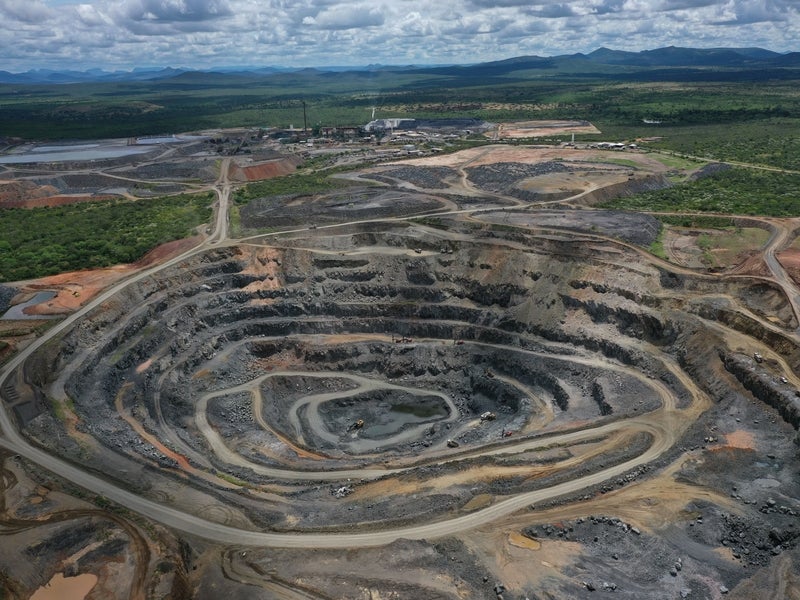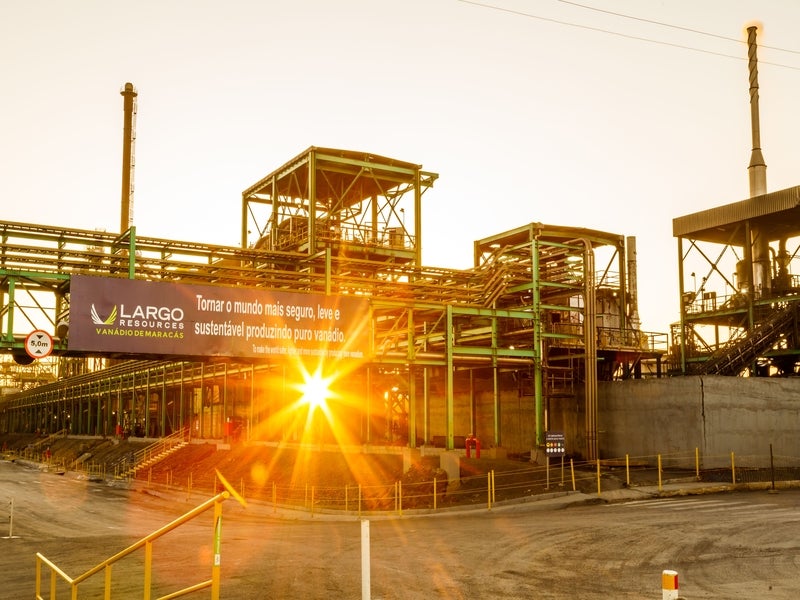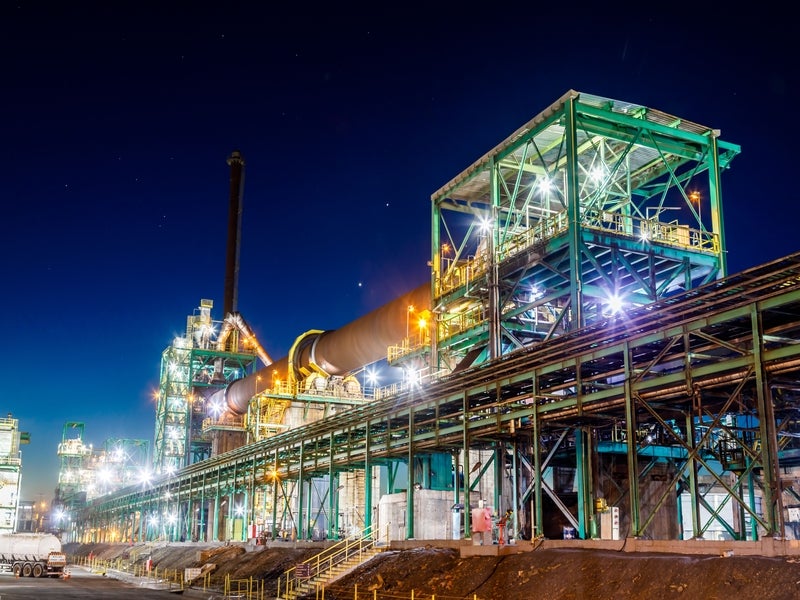The Maracas Menchen vanadium mine, located in Bahia, Brazil, is one of the world’s highest-grade vanadium deposits and the only vanadium mine in Latin America.
Operational since 2014, the open-pit mining project is owned and operated by Largo, a vanadium producer based in Canada.
The Maracas Menchen operation is currently based on the Campbell pit (Gulcari A deposit) and has a nameplate production capacity of 13,200 tonnes of vanadium pentoxide (V2O5) a year.
Largo filed a technical report in December 2021 to extend the productive life of the Campbell pit until 2032, along with a pre-feasibility study (PFS) to develop two nearby vanadium deposits, namely Gulcari A Norte (GAN) and Novo Amparo North (NAN), to continue mining operations at Maracas Menchen at least until 2041.
The Maracas Menchen mine expansion is expected to increase the annual vanadium production capacity of the project to 16,000t by 2032, in addition to producing titanium dioxide (TiO2) as a co-product.
Location, geology and mineralisation
The Maracas Menchen vanadium mine is located in the greater Maracas municipality in the north-eastern Brazilian state of Bahia. It lies 250km south-west of Salvador and 813km north-east of Brasilia.
The project area comprises three mining concessions and 15 exploration concessions covering a total area of 17,690ha.
Vanadium mineralisation at Maracas Menchen is found hosted in the Rio Jacare Intrusion, which is located on the eastern edge of the Contendas-Mirante supracrustal sequence within the Archean Sao Francisco Craton.
The mineralised zones feature fine to medium-grained gabbro and magnetite gabbro, with layers of anorthosite, magnetite pyroxenite, and magnetitite.
Vanadium and titanium reserves at Maracas Menchen
The Campbell pit and the GAN and NAN deposits of the Maracas Menchen project were estimated to hold 60.36 million tonnes (Mt) of proven and probable ore reserves grading 0.79% V2O5 and 8.24% TiO2 as of October 2021.
Measured and indicated resources of the three deposits stand at 63.69Mt grading 0.80% V2O5 and 8.21% TiO2.
Mining and ore processing
Maracas Menchen is a conventional open-pit mining project involving drill, blast, load and haul operations.
The run-of-the-mine (ROM) ore is sent to a nearby processing plant, where it undergoes three-stage crushing, one-stage grinding and two-stage magnetic separation, prior to magnetic concentrate roasting, vanadium leaching, and ammonium metavanadate (AMV) precipitation and filtration.
The obtained AMV is sent to ammonia removal and V2O3 reactors to produce V2O5 and V2O3 powder. The plant also houses a furnace to produce V2O5 flakes.
The Maracas Menchen expansion plan includes addition of an ilmenite concentration plant to produce ilmenite through flotation of non-magnetic tailings of the existing vanadium plant. It also calls for a titanium processing plant to produce TiO2 by recovering titanium from the ilmenite through sulphuric acid leaching and thermal hydrolysis.
Infrastructure facilities
Other infrastructure at the project site includes tailings storage ponds, ore and product stockpiles, explosive storage facilities, workshops, warehouses and an administrative building.
The Maracas Menchen project is supplied with water from the Rio de Contas River, while electricity is supplied through an 85km-long, 138kV transmission line from Coelba’s Ibicoara regional substation.
A step-down substation comprising two 13.8kV/15MVA transformers is installed at the Maracas Menchen plant site to distribute electricity.
Contractors involved
GE21 Consultoria Mineral, a mining consulting company based in Brazil, prepared the technical report for the Maracás Menchen mine life extension along with a PFS to develop the GAN and NAN deposits in October 2021.
Aker Solutions had previously prepared a definitive feasibility study (DFS) for the Maracas Menchen vanadium mine in 2008.
Maracas Menchen vanadium project background
The Maracas Menchen vanadium and titanium property was explored in the 1980s by Companhia Baiana de Pesquisa Mineral (CBPM).
CBPM and Odebrecht formed a joint venture called Vanadio de Maracas to explore and develop the property in 1984.
Odebrecht, which had held 93% ownership in Vanadio de Maracas, formed a 50:50 joint venture with CAEMI Mineracao e Metalurgia (now Vale) to develop the project in the early 1990s.
Largo acquired the project in 2006 and completed a DFS in 2008. Mining started at the Campbell pit in September 2013, whereas V2O5 production started in August 2014.





